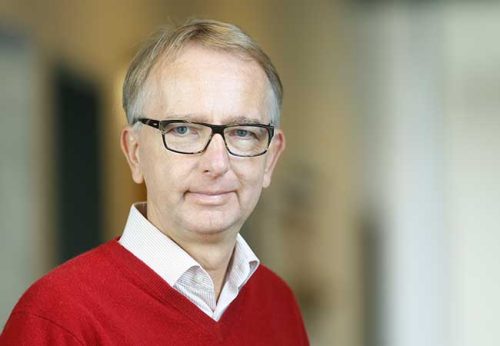The European Research Council has awarded Professor Reinhard Dörner an ERC Advanced Grant of around €2.5m for the development of new research apparatus that can be used to measure electron waves. Together with his team, Dörner wants to find out what happens on a quantum mechanical level when electrons are ejected from atoms, a process known as photoionization.

Professor Enrico Schleiff, President of Goethe University Frankfurt, congratulated the ERC grantee: “Professor Dörner is an outstanding scientist who has played a key role in shaping the development of atomic physics at the international level for many years. Already as a doctoral researcher at the end of the 1980s, Professor Dörner was substantially involved in the development of the COLTRIMS reaction microscope in Frankfurt, which is today used in unique experiments to measure quantum effects in molecules and atoms with an accuracy so far unbeaten. His fundamental research makes an essential contribution to understanding the laws of quantum physics, which are just as important for much larger systems such as quantum computers or quantum materials. But he is also committed to academia far beyond research: In his role as Dean of Studies at the faculty, for example, he is living proof that excellent research and innovative teaching are two sides of the same coin. That Professor Dörner has been successful in the extremely competitive selection procedure for ERC grants is greatly deserved.”
In his ERC project “Timing-Free Phase: Phase, Time and Correlations in Free Electron Wave Packets”, Professor Reinhard Dörner will examine electrons ejected out of atoms by intense light via the photoelectric effect. Electrons behave not only like particles but also like waves. While it is easy to measure the amplitude, i.e. the height of the wave crests of such electrons, to date it was not possible to determine the temporal sequence of the wave crests or the phase, that is, the location of the wave crests at a given time. Dörner and his team recently succeeded for the first time in visualizing this phase of electron waves. Part of the experimental setup was the COLTRIMS reaction microscope developed in Frankfurt. On the basis of this experiment, he now wants to construct a device known as a light field interferometer within his ERC project to examine, in combination with the COLTRIMS reaction microscope, electron waves in even greater detail. Among the objectives are to observe how electrons transform from quantum particles into normal particles in the shortest space of time and to track down the entanglement between different particles that Einstein called “spooky”.
Reinhard Dörner, born in 1961, is Professor of Experimental Atomic Physics and has been teaching and conducting research at the Institute for Nuclear Physics at Goethe University Frankfurt since 2002. He is the institute’s Deputy Director and Dean of Studies at the university. In 2015, the German Physical Society (DPG) awarded him the Robert Wichard Pohl Prize for his contributions to the development of the COLTRIMS measuring technique, and in 2016 he received the Helmholtz Prize of the Helmholtz Fund. Dörner conducts research in atomic and molecular physics and is particularly interested in many-particle dynamics. Together with his team, he performs experiments in Frankfurt and at the brightest X-ray light sources worldwide, from Hamburg and Berlin to Paris, Grenoble, Berkeley and Lund in Sweden. His work centers on atomic and molecular physics in strong laser fields and X-ray light, using kinematically complete experiments with COLTRIMS reaction microscopes.
The European Research Council (ERC) is an institution established by the European Commission to fund frontier research. It has existed since 2007 under several EU framework programs for research and innovation. It is headed by the Scientific Council, a body of eminent international scientists and scholars, which is responsible for the ERC’s strategic orientation.
With the ERC Advanced Grants, the ERC funds ground-breaking research projects by scientists with a proven track record, who receive up to €2.5m over a period of up to five years. https://erc.europa.eu/funding/advanced-grants
Background: Researchers visualize quantum effects in electron waves (2024)









